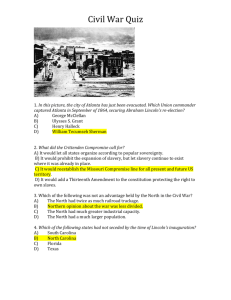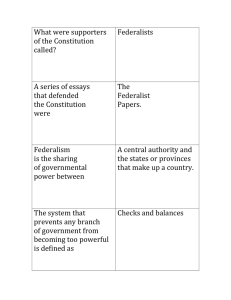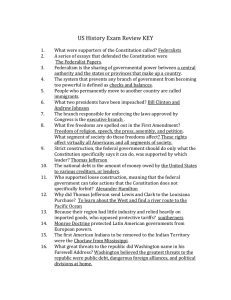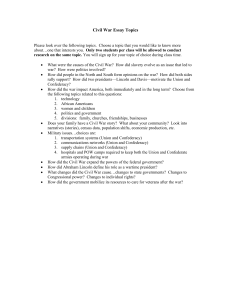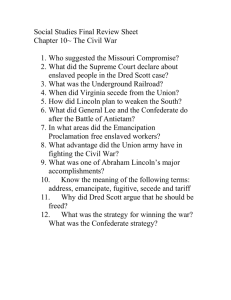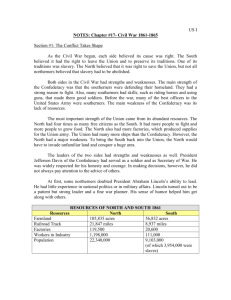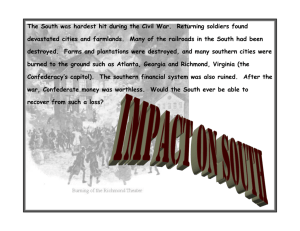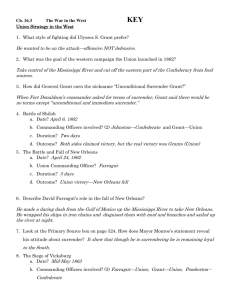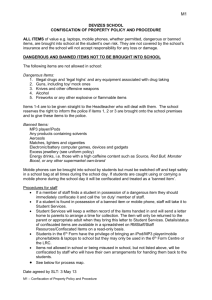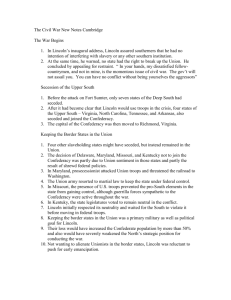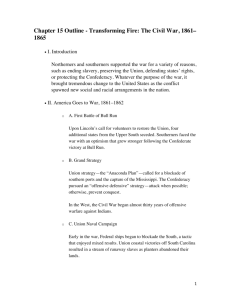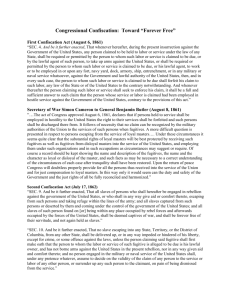The Second Confiscation Act Signed http://civilwar150.longwood
advertisement
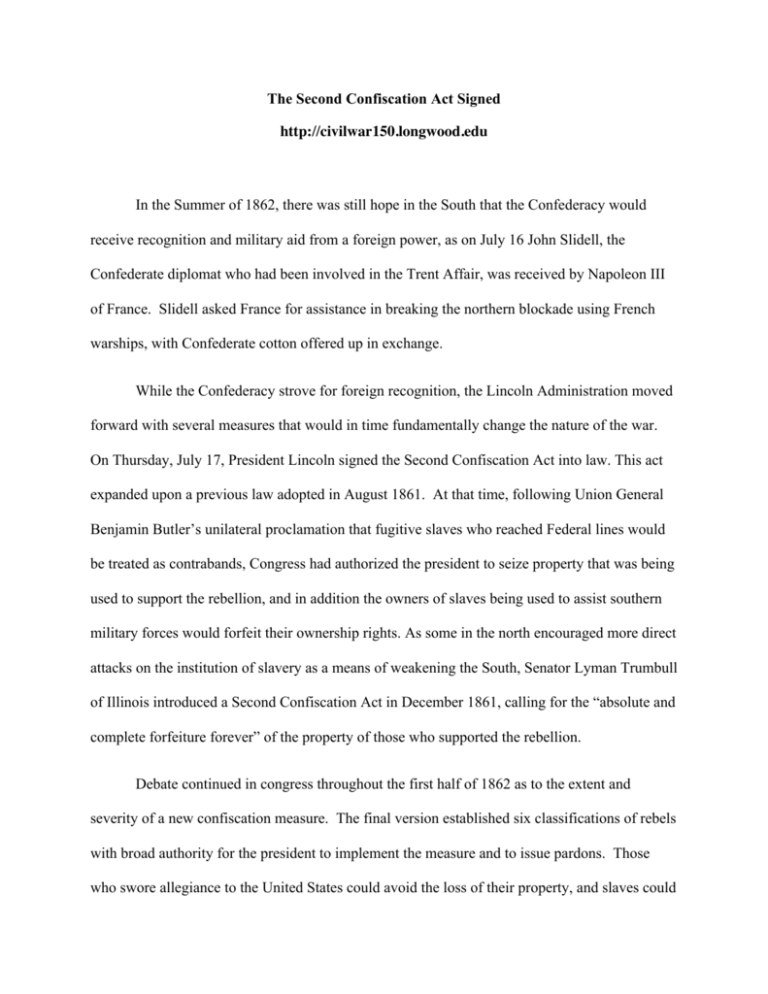
The Second Confiscation Act Signed http://civilwar150.longwood.edu In the Summer of 1862, there was still hope in the South that the Confederacy would receive recognition and military aid from a foreign power, as on July 16 John Slidell, the Confederate diplomat who had been involved in the Trent Affair, was received by Napoleon III of France. Slidell asked France for assistance in breaking the northern blockade using French warships, with Confederate cotton offered up in exchange. While the Confederacy strove for foreign recognition, the Lincoln Administration moved forward with several measures that would in time fundamentally change the nature of the war. On Thursday, July 17, President Lincoln signed the Second Confiscation Act into law. This act expanded upon a previous law adopted in August 1861. At that time, following Union General Benjamin Butler’s unilateral proclamation that fugitive slaves who reached Federal lines would be treated as contrabands, Congress had authorized the president to seize property that was being used to support the rebellion, and in addition the owners of slaves being used to assist southern military forces would forfeit their ownership rights. As some in the north encouraged more direct attacks on the institution of slavery as a means of weakening the South, Senator Lyman Trumbull of Illinois introduced a Second Confiscation Act in December 1861, calling for the “absolute and complete forfeiture forever” of the property of those who supported the rebellion. Debate continued in congress throughout the first half of 1862 as to the extent and severity of a new confiscation measure. The final version established six classifications of rebels with broad authority for the president to implement the measure and to issue pardons. Those who swore allegiance to the United States could avoid the loss of their property, and slaves could be freed only as a result of court action, and not solely by military proclamation. The final vote on the bill was divided along party lines, with the overwhelming majority of Republicans approving the measure, while Democrats opposed. Some had called the confiscation acts “outright acts of emancipation;” these men could not have known that Lincoln would propose precisely that by week’s end when he presented his proposal for an Emancipation Proclamation to his cabinet. While political issues dominated the news of the week, there was also a considerable amount of military activity, though much of it was relatively minor in nature. Two important command changes occurred, with the Federal District of West Tennessee being incorporated into the Army of the Mississippi, headed by Ulysses S. Grant, while General Henry Halleck took command as general-in-chief of all United States armies. Meanwhile on July 15, in the Yazoo River north of Vicksburg, Mississippi, the Confederate ironclad Arkansas fought its way through a number of Union vessels to the protection of the southern batteries at Vicksburg. That same evening Admiral David Farragut moved his Union fleet past the batteries, engaging in a bombardment with both the Confederate shore guns and the Arkansas. Several Union vessels were damaged, as was the southern ironclad, but the Yankees had failed to destroy the vessel and as a result Vicksburg’s defenses were considerably strengthened. It would take nearly a full year of additional fighting and maneuvering for the Federals to capture that strategic location and gain control of the entire Mississippi..

